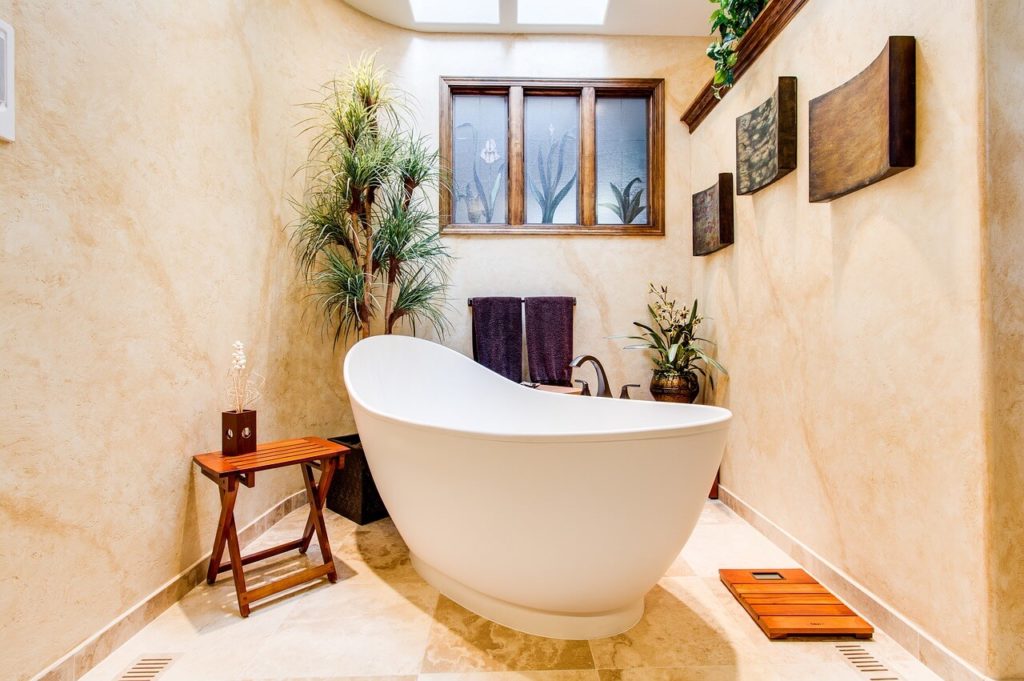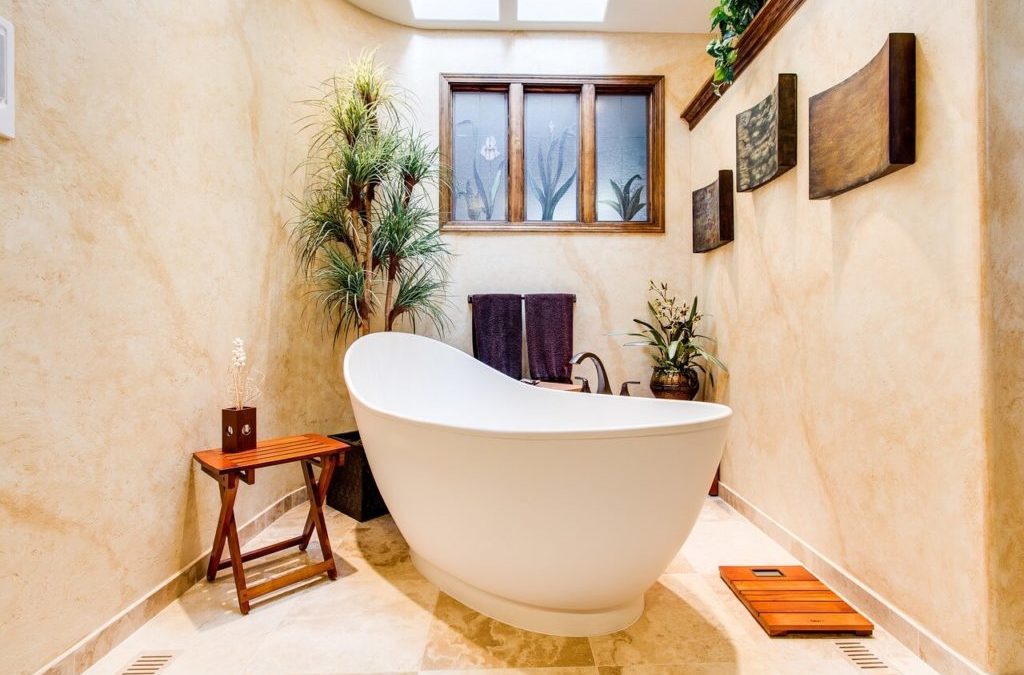You’ll want to consider different types of bathtubs, a debate between bathtub sizes, and consider your budget, as well. Luckily, tubs don’t have to be exorbitantly expensive, depending on what type, size, or material you choose.
Types of Bathtubs
There are two main types of categories to consider when looking at bathtub options: experience and installation. These options also range in tub sizes.
Tub Experience
- Standard Tubs: This option is the simple choice with no bells or whistles attached. The standard tub size is around 5 feet long, 30” wide and 14 to 16” high. They also generally are the most affordable models, between $200 to $500. These come in a few different installation options, including alcove, drop-in, and freestanding.
- Soaking Tubs: If you like big bathtubs, this might be the one for you. These are deeper than standard tubs for a fuller soaking experience, and they may be larger than standard tubs. Soaking tubs typically start at around $300 and can range into the thousands.
- Whirlpool Tubs: These tubs include jets that provide a relaxing, massage-like experience. Whirlpool tubs typically start at around $700 and can go up to more than $1,000.
- Air Tubs: Similar to whirlpool tubs, but they shoot air out from a number of different jets rather than shooting water. Air tubs generally start at around $800 and can cost up to $2,000.
- Combination Tubs: You can find tubs that combine two or more of the aforementioned features. It’s possible to find soaking tubs with jets, for example. Keep in mind that the more features a tub comes with, though, the higher the price.
- Walk-in Tubs: These tubs typically appeal to seniors or people with disabilities who may have a hard time getting in and out of a standard tub. This is the most expensive tub experience, usually costing between $2,000 and $6,000.
Tub Installation
- Alcove Tubs: This is the most common bathtub installation, which involves the tub being installed between three walls and open space on the fourth side.
- Freestanding Tubs: These do not have any sides installed along a wall but rather stand on feet or a base. They also tend to be larger than your standard bathtub size due to the nature of the installation.
- Corner Tubs: These are usually three-sided and installed in the corner of a room to save space. Two of the three sides are installed along a wall, with the third side finished and open.
- Drop-in Tubs: Sometimes called platform bathtubs, this is just the basic shell of the tub, as it is meant to be dropped into a frame designed to match the bathroom.
- Under-mount Tubs: Similar to a drop-in tub, under-mount tubs have a deck surrounding the rim that usually is made of tile or stone, sometimes to match the bathroom floor.
Bathtub Materials
While the type of bathtub arguably is one of the most important factors when selecting a new one, the best bathtubs also are made of quality materials.
Acrylic
An acrylic bathtub is made from layers of acrylic that is vacuum-formed over-molded fiberglass sheets. Acrylic tubs are lightweight, easy to install, easy to clean, and available in various shapes, styles, and colors. When well-maintained, acrylic bathtubs can last up to 15 years.
Fiberglass
A fiberglass bathtub is made from molded fiberglass sheets. Fiberglass tubs are low cost and easy to install. The downside is that fiberglass can feel thin and can crack under too much pressure. For a sturdier bathtub, choose a sturdier material.
Porcelain
A porcelain bathtub is constructed from cast iron or stamped steel before being coated with a layer of porcelain enamel. A porcelain tub is relatively inexpensive, durable, and easy to clean. It also is resistant to most common chemicals.
Steel
A steel bathtub is a more affordable option that resembles cast iron. Both cast iron and steel tubs are better at retaining heat than acrylic or fiberglass bathtubs are; however, a steel tub chips more easily than cast iron.
Copper
Copper bathtubs have what is considered a “living finish.” The copper oxidizes over time and creates a unique, multicolored finish that also helps heal surface scratches and scuffs. Copper bathtubs also are durable, rustproof, mildew-resistant, and antibacterial. While more expensive than other materials, it does have the longest lifespan of all the tub materials.
Stone Resin
Stone resin bathtubs are made from a blend of resin and crushed natural stone. Scratches and cracks are rare, and the resin makes the tub resistant to mildew and bacteria. Stone resin tubs have the second-longest lifespan of all materials but come at a hefty price.
Cast Iron
Cast iron tubs will have the longest lifespan of any other material. It is arguably the most durable tub available and resistant to chipping, scratching, and denting. It’s also great for retaining the water’s heat. However, these tubs are expensive, very heavy, and require a labor-intensive installation.
Takeaway
When deciding on the best bathtub for your needs, there are many factors to consider. Listen to your budget and mull over the size, style, and material that works for your home and lifestyle. Additionally, take into account your bathroom remodel or renovation needs. PEDINI Miami is a great place to start to find a modern bathroom design that will work for your home — and your new bathtub!


